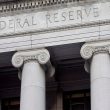by Jeffrey Kleintop, CFA®, Senior Vice President, Chief Global Investment Strategist, Charles Schwab & Co., Inc.
Key Points
- In recent months, two investment themes have been rewarding investors with outperformance: companies in the defense sector and those participating in share buybacks.
- If geopolitical tensions ease, the outperformance by defense stocks may not be sustained. If they flare up, this investment theme may see volatility given a history of inconsistent performance.
- The trend of rising outperformance by the shares of companies announcing buybacks has been remarkably stable in both the U.S. and European markets. History shows this theme could be sustained for years.
In recent months, two investment ideas have been rewarding investors with outperformance: companies in the defense sector, and those participating in share buybacks. Let’s take a close look at what may be driving both of these market themes and whether the outperformance is likely to continue.
Defense
This year has seen frequent overall market trend reversals, yet defense stocks have consistently posted larger gains relative to the rest of the market, year to date, as you can see in the chart below.
Defense has been a good offense for investors

Source: Charles Schwab, Bloomberg data as of 4/23/2021. Indexes are unmanaged, do not incur management fees, costs and expenses, and cannot be invested in directly. Past performance is no guarantee of future results.
Defense spending has not been favored in 2021 government budgets, but rising geopolitical tensions often inspire gains in this area of the market, so it’s worth taking a look at what might be causing the outperformance in recent months.
- Increasingly heated rhetoric and threats between nations, such as China-Taiwan, U.S.-Russia, Israel-Iran, may involve U.S. or its allies.
- Adversaries often use national elections and changes in administration to challenge and test foreign and domestic policy positions. The U.S. Biden administration hits the first 100 days in office milestone this week.
- Securing economic resources (COVID-19 vaccines, semiconductors, energy commodities) heightens the risk for armed conflict between nations.
The potential always exists for a geopolitical event to draw the U.S. and other major nations into armed conflict. While events are often unpredictable and the countries involved vary, the markets’ reactions to threats of armed conflict between nations have tended to be both broad-based and short-lived, averaging declines of 3% over an average of 7 days for two dozen involving military operations of the U.S. and allies since 1980. During periods of economic recovery and growth, the effects were more muted than during recessionary periods.
U.S. military operations and markets

Source: Charles Schwab, Factset data as of 4/23/2021. **MSCI AC World Index. Past performance is no guarantee of future results.
Markets and NATO military regime change operations

*MSCI AC World Index. MSCI World Index used prior to inception of MSCI AC World Index on 12/31/1987.
Source: Charles Schwab, Factset data as of 4/23/2021. Past performance is no guarantee of future results.
History shows that these overall market reactions have tended to be muted and brief. Furthermore, defense stocks have not been a consistent hedge against these military operations. Since the inception of the MSCI World Aerospace and Defense Index at the end of 1998, the nine events involving military actions saw defense stocks rise an average of only 0.1% on the day of the event and post a gain only about half of the time (during 5 of the 9 events).
If tensions ease, defense stocks outperformance may not be sustained. If they flare up, this investment theme may see volatility given the history of inconsistent performance. A long history of geopolitical developments shows holding a well-diversified portfolio may buffer against potential short-term market moves. Investors should avoid overreacting to geopolitical developments and stick to their long-term financial plans.
Buybacks
Firms share buyback announcements appear to have been particularly good for share prices over the past six months. The trend of rising outperformance by the shares of companies announcing buybacks has been remarkably stable in both the U.S. and European markets.
Buyback boost in U.S.

Source: Charles Schwab, Bloomberg 4/23/2021. Indexes are unmanaged, do not incur management fees, costs and expenses, and cannot be invested in directly. Past performance is no guarantee of future results.
Buyback boost in Europe

Source: Charles Schwab, Bloomberg 4/23/2021. Indexes are unmanaged, do not incur management fees, costs and expenses, and cannot be invested in directly. Past performance is no guarantee of future results.
The Solactive Buyback Indexes measures the performance of stocks that have announced a plan to repurchase shares within the past two months. In general, buybacks are seen by investors as a sign that a company has good cash flow and a strong balance sheet. These indicators are usually considered hallmarks of a high-quality company. At a time when so-called “zombie” companies with no earnings have garnered attention for their strong market performance, the outperformance by the stocks of companies engaging in buybacks suggests a belief that good fundamentals could result in good performance.
Coinciding with their outperformance trend, buybacks are ramping back up in the U.S. and Europe, as you can see in the chart below.
Buybacks are rebounding after stalling in 2020

Source: Charles Schwab, Bloomberg 4/23/2021.
Market trends can be fleeting, so it’s possible that the buyback theme could be short-lived. But, following the 2008-09 global recession, buybacks were also a strong market theme for five years. The buyback index outperformed the broad market during 2010-2014 in both the U.S. and in Europe.
Looking at buyback outperformance in U.S. during the last economic recovery

Solactive US Buyback Total Market Index start date is Feb 26, 2010.
Source: Charles Schwab, Bloomberg 4/23/2021. Indexes are unmanaged, do not incur management fees, costs and expenses, and cannot be invested in directly. Past performance is no guarantee of future results.
Looking at buyback outperformance in Europe during the last economic recovery

Source: Charles Schwab, Bloomberg 4/23/2021. Indexes are unmanaged, do not incur management fees, costs and expenses, and cannot be invested in directly. Past performance is no guarantee of future results.
Two ideas stand out
There have been other market trends, but they have not exhibited as much consistency or magnitude as the either the defense sector or the buyback outperformance trends over the past six months:
- Style: Value has outperformed Growth, but not consistently or by as wide of a margin.
- Size: Small cap stocks have been outperforming Large caps by a wide margin since early November but have given back some of that ground over the past month.
- Geography: International stocks have outperformed U.S. stocks, but by a narrower margin.
- Sectors: Energy has been the best performing sector by a wide margin in the U.S. and Europe, but the sector has been giving up some of that outperformance over the past month and a half.
What’s working
Although history is no guarantee of future performance, and there are significant differences between this cycle and the last, it is worth looking at what’s working to see if history shows that it may continue. These two investment themes that have been rewarding investors with outperformance in recent months may have different durations. If geopolitical tensions ease, the outperformance by defense stocks may not be sustained. Yet, if they flare up, this investment theme may see volatility given the history of inconsistent performance. Alternatively, history shows that the trend of rising outperformance by the shares of U.S. and European companies announcing buybacks has led to years of consistent outperformance at a similar point in the last global economic cycle.
Michelle Gibley, CFA®, Director of International Research, and Heather O’Leary, Senior Global Investment Research Analyst, contributed to this report.














